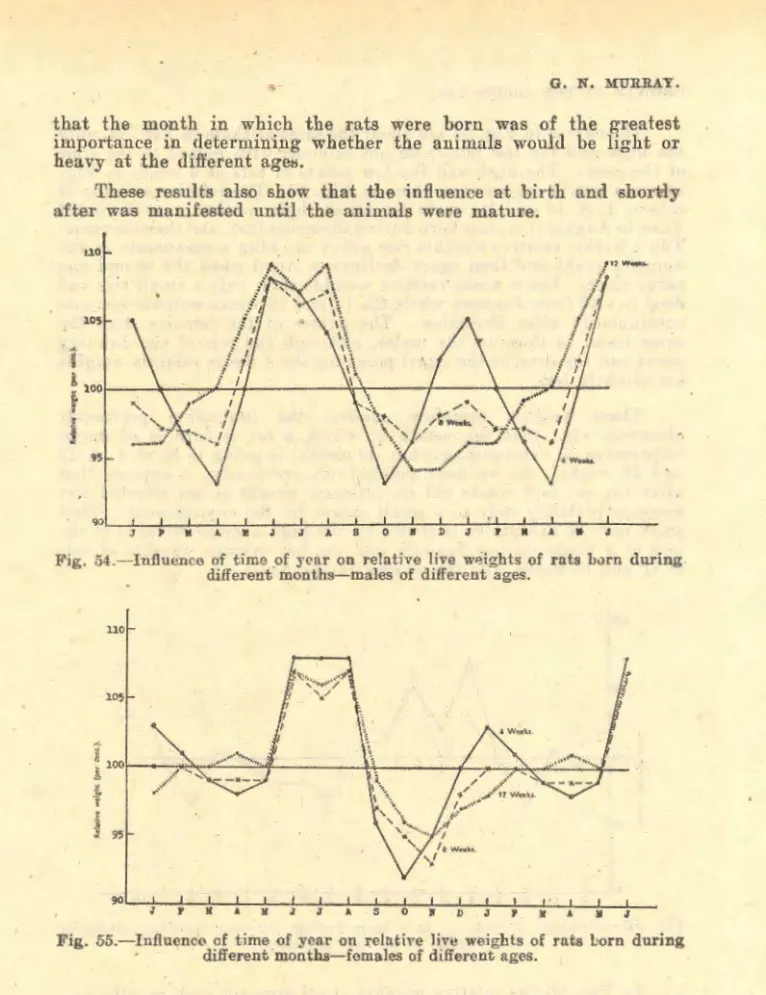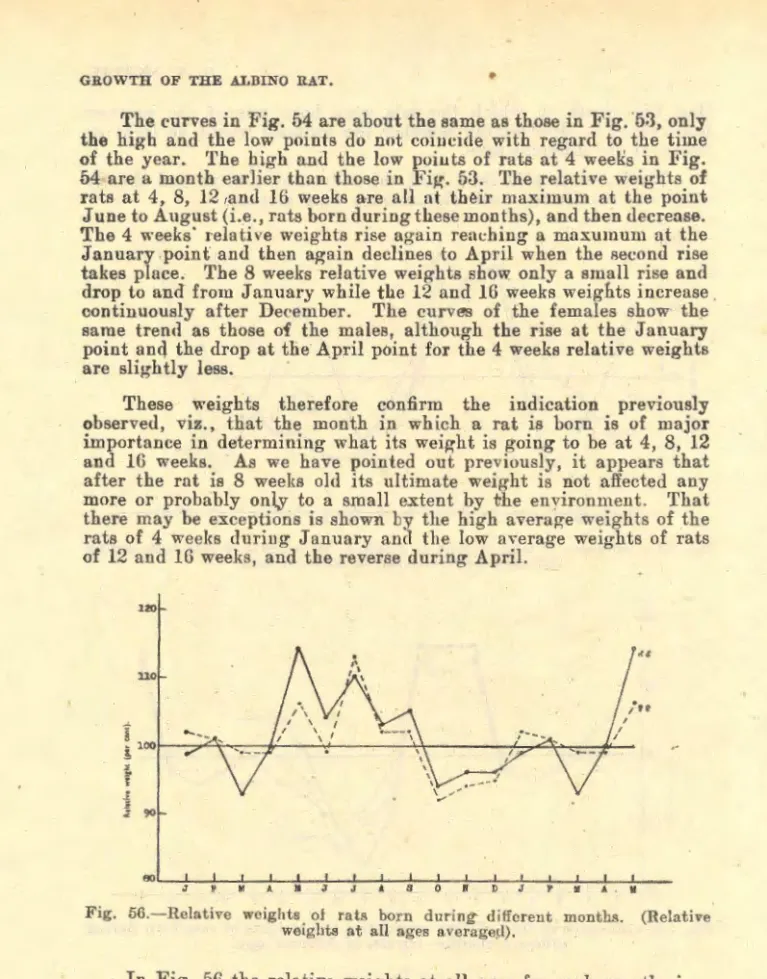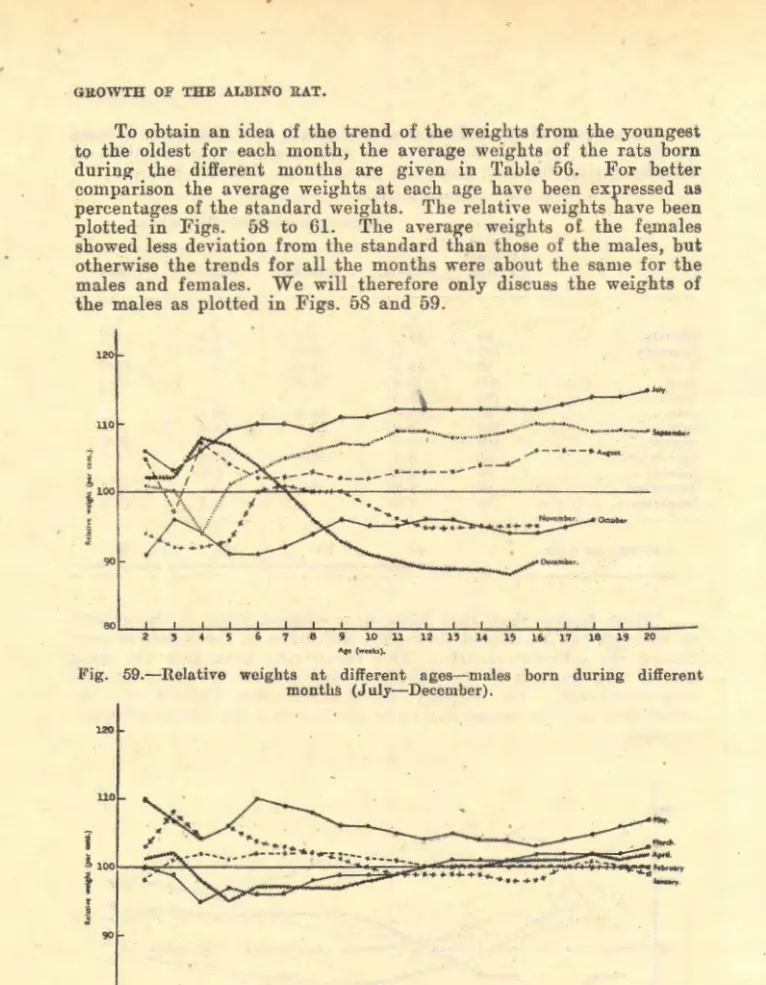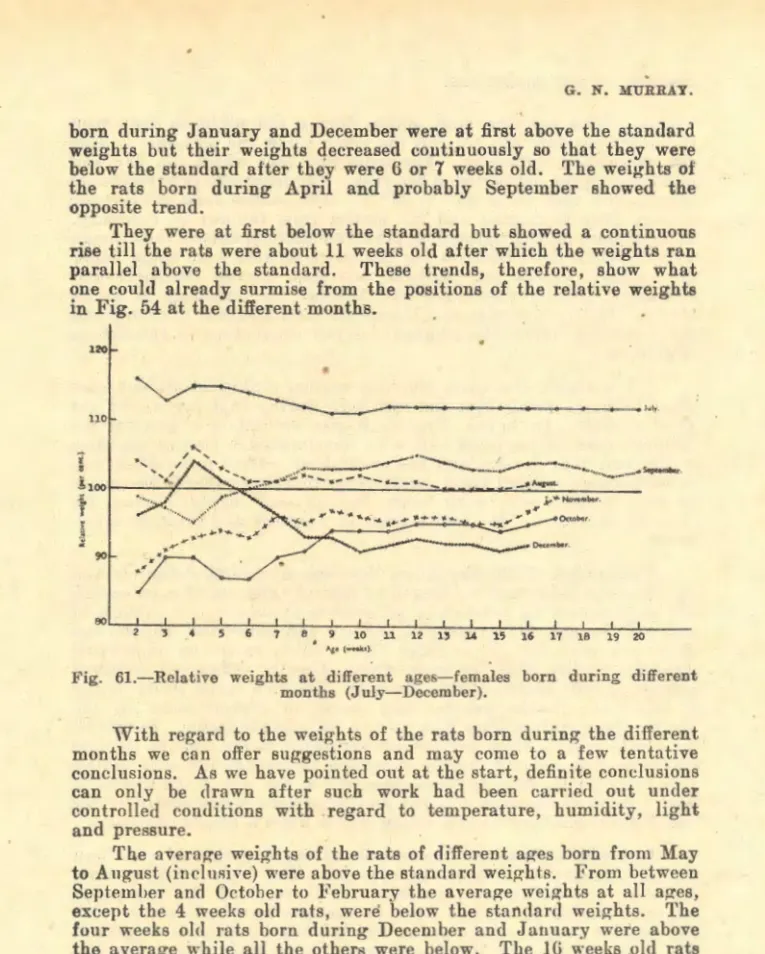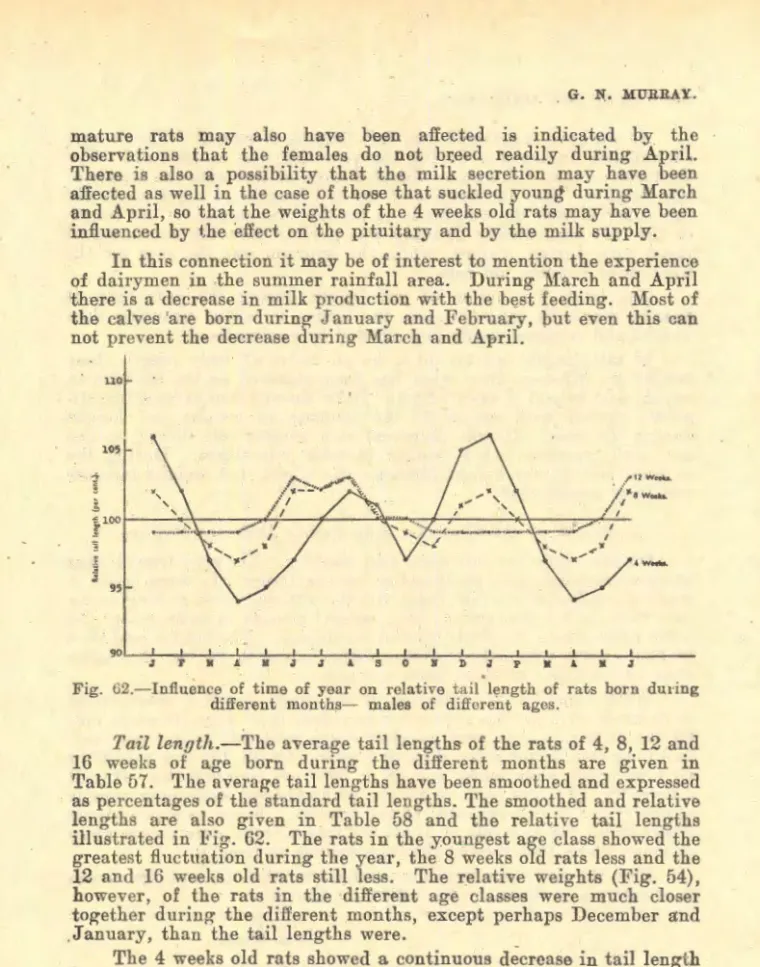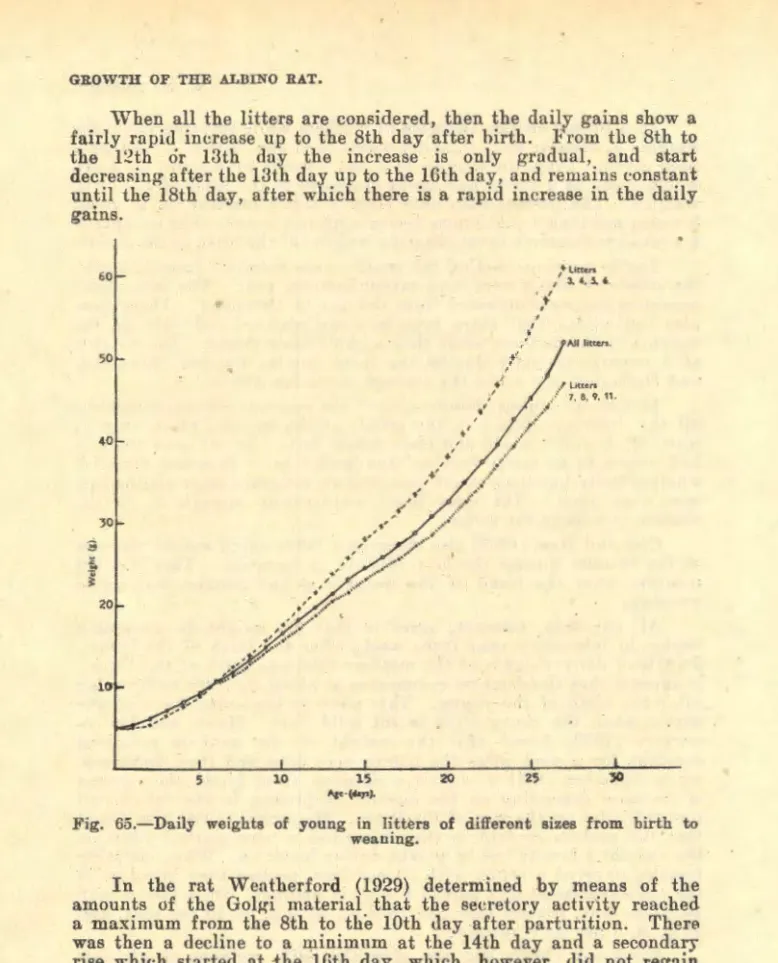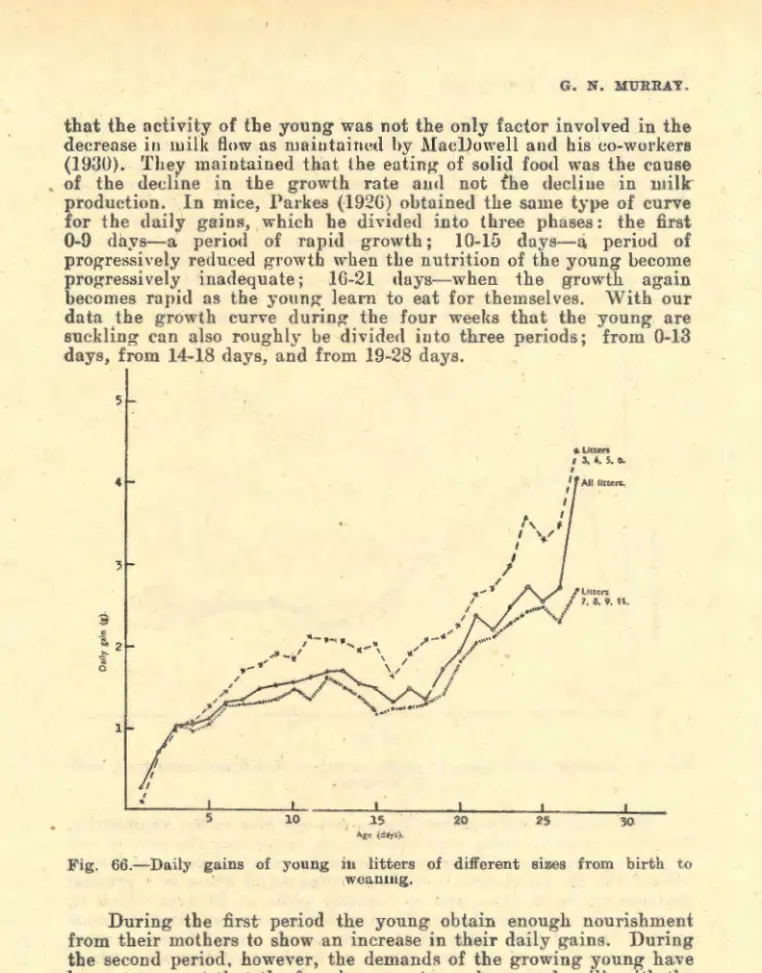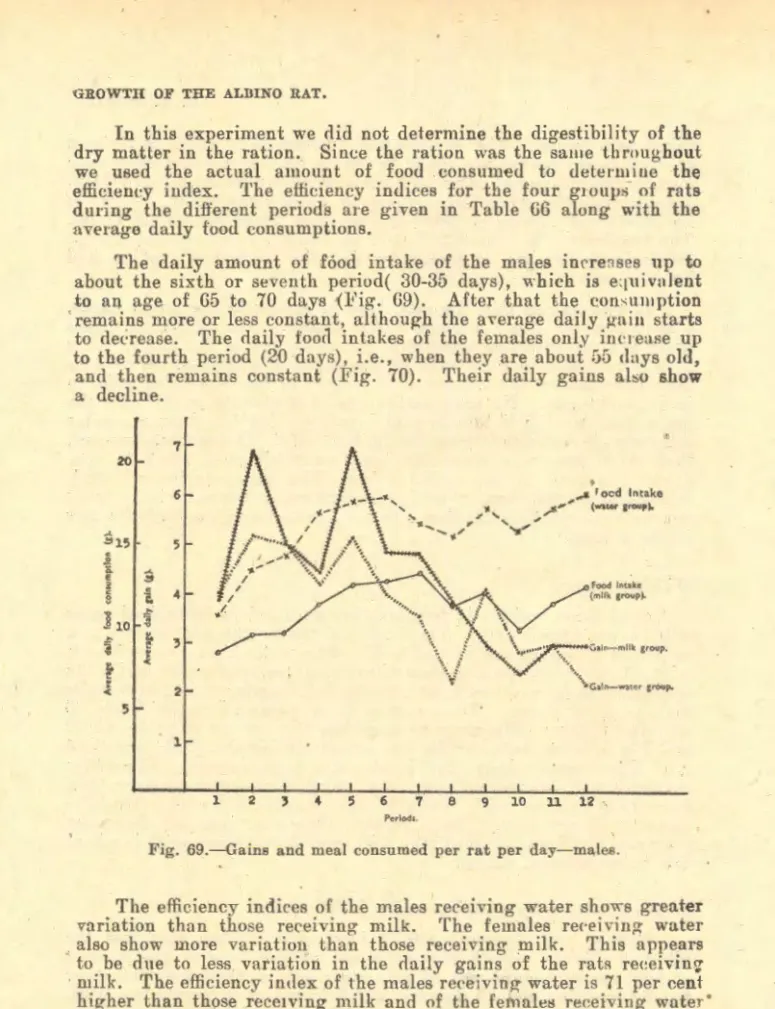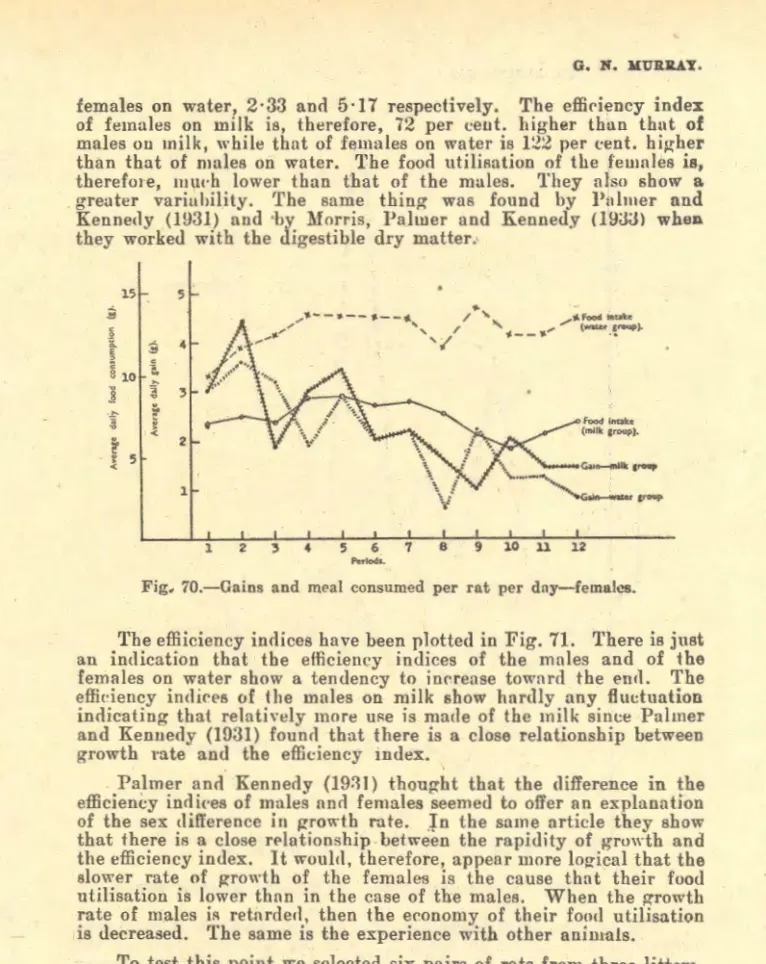These figures suggest that the differences between years in the growth of rats may be due to the difference in the number of births in different months. The weight of rats born in April and probably in September showed the opposite trend. Regarding the weights of rats born in different months, we can offer suggestions and perhaps come to some tentative conclusions.
The average weights of the rats of different ages born between May and August (inclusive) were above the standard weights. The room had fans running day and night during the warm period of the year. What exactly stimulated the growth of the four-week-old rats born in January is difficult to explain.
Taillenoth.-The mean tail lengths of rats 4, 8, 12, and 16 weeks old, born in different months, are given in Table &7. Table 59 shows the daily weights of the rats and the daily amounts of food consumed. Also given are the average weights of rats in the third experiment that received milk and those that received water.
34;\With the exception of the very young females, there is only a small increase (about 15 per cent.) in weight during the first two weeks. The daily amount of food consumed reaches its maximum three days before the birth of the litter. The weights of the rats receiving milk with the flour mixture and those receiving water with the flour mixture were kept separately.
The weights at 4 1\'eeks are therefore lower than the weights at the birth of the litter. They did not mention what the trend for the females' weights was up to. The feed consumption of the rats receiving milk is also included for the sake of companionship.
The two groups of rats show different trends in their consumption of the meal mixture. In this experiment, we did not determine the digestibility of the dry matter in the ration. The females' food utilization is therefore significantly lower than the mules.
The average daily weights of the rats and average daily food consumption are shown in Table G7.
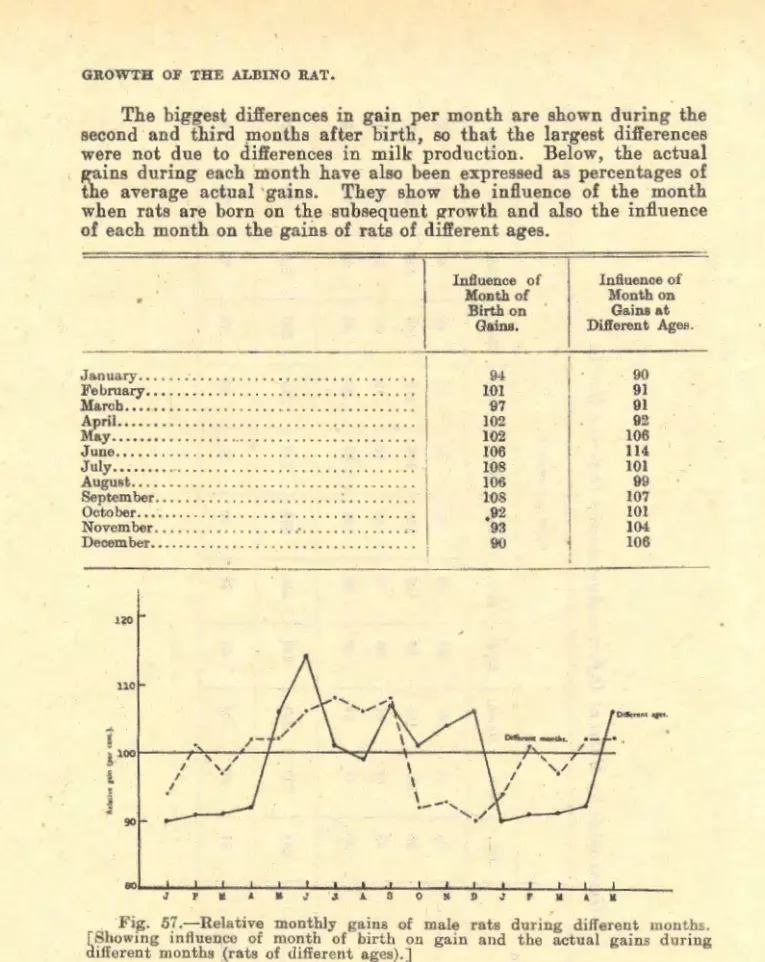
SUMMARY
The weight of the mothers immediately after giving birth does not appear to influence the birth weight of the young if the litter size remains constant. As mentioned, the weight of the mothers had no influence on the average buttock weight of the young. However, the weight of the mothers at delivery had a decisive influence on the average weight of the young at weaning.
As the mother's weight increased to 2GO g. the boy's average weight decreased and then increased again. It was found that only in young females was maternal weight gain associated with a decrease in mean weaning weight of the young, while in old females there was a delay for the young to gain weight with an increase in the weight of the young. the mother. Although the best females, i.e. those that raised the largest and heaviest litters, were retained, it does not appear that the fecundity of the population had increased over the four years.
The aven wee litter size was higher during the summer months, November to January (7·8), than during the winter months, May to July (G·S). It may have been caused. effect on ~milk production of the mothers as well as through the environmental influence directly. The weights of the snckling females showed about the same · seasonal trends as the weights of the young, so that milk supply may also have been affected.
During the first year, the vaginas were opened when the females were 47·2 days old and weighed 10() g. and during the fourth year when they were 42.7 days old and weighed 95 g. 4) When the average weight of a:r:e rats is compared with those of the original stock at the Wistar Institute, our males are significantly heavier at various ages up to 20 weeks, while females show practically no difference. The lowest anrl highest points shifted about !l to 4 months after rats were grown from 4 to wk IGL..indicating an influence of month of birth, also that an early influence may persist into maturity. It appears that after 8 weeks the final weight of the mouse is no longer affected, or only to a small extent, by the environment in which it was reared.
Although temperature may have affected the weights of mouse A, it seems more likely that there may have been an effect from a combination of factors, perhaps temperature and humidity, while a change in day length may have also affected the growth of the animals. through the effect on the pituitary gland. When the same amount of food was given individually to male and female pairs of the same weight, then there was no difference in food utilization. The difference was, therefore, due to the faster growth of males when both sexes were fed ad lib.
ACKNOWLEDCMENTS
Daily gains of suckling pups showed an increase from birth to 13 days, milk supply then being sufficient, a stoppage or decrease in daily gains from 14 to 18 days, milk supply being the limiting factor, and a continued increase in gains daily from 19 to 28 days after the young are accustomed to solid food.
